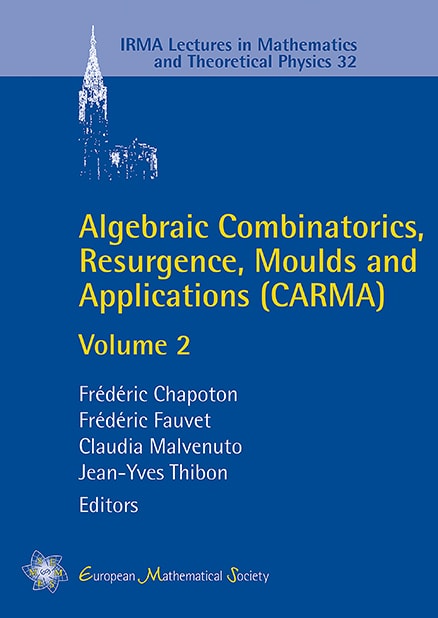The scrambling operators applied to multizeta algebra and singular perturbation analysis
Jean Ecalle
Université Paris-Sud, Université de Paris-Saclay, Orsay, France

A subscription is required to access this book chapter.
Abstract
The present paper addresses two seemingly unrelated topics – the analysis of singular-and-singularly-perturbed differential systems; and the arithmetics of multizetas – but with a strong unifying thread, provided by the three scrambling operators.
The operators in question – scram, viscram, discram – properly belong to the field of combinatorics and mould algebra. Their properties are many, but one stands out: generating rich symmetries and sophisticated operations out of poorer or more elementary ones.
The formal solutions of singular differential systems, when expanded in inverse-power series of the 'critical variable' , tend to exhibit divergence, but of a regular and well-understood type: resummable and resurgent, with a resurgence regime completely governed by the now classical Bridge equation. When one introduces a singular perturbation parameter and expands the solution in powers of the same, divergence and resurgence still rule the show, but the picture becomes incomparably more complex: the resurgence calls for two new Bridge equations, not one; the familiar Stokes constants make way for the radically different tessellation coefficients; and it takes the operator scram to fully unravel the mechanisms responsible for this new level of complexity.
The closely related operators viscram and discram, on their part, render distinguished services in multizeta algebra, especially for dissecting what is arguably the most pivotal case: the bicoloured multizetas. For one thing, they assist in proving the independence of the standard system of bicolour generators. But their real contribution lies elsewhere. The fact is that, due to the simultaneous play of weigths and colours , there exist for any given (large) total weight , a huge number of -coloured multizetas. Yet there is a saving grace: the double symmetry (known as arithmetical dimorphy) which constrains these multizetas induces so strong a rigidity that the whole information can be recovered from relatively sparse boundary data (somewhat like with harmonic or analytic functions). The phenomenon is particularly striking in the case of bicolours and their three satellites: the 'lower satellite' sa, with all degrees set equal to ; the 'first upper satellite' sa, with all colours (simultaneously) set equal to or ; and the 'second upper satellite' sa, similar in shape to the first, but completely different in origin. We show, with ample assistance from viscram and discram, how each of these three satellite systems not only morphs into the other two, but also leads to the complete system of bicolours – each conversion finding its expression in remarkably explicit formulae.